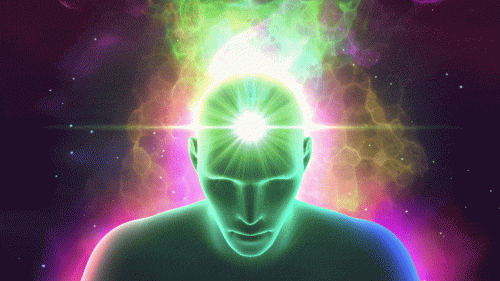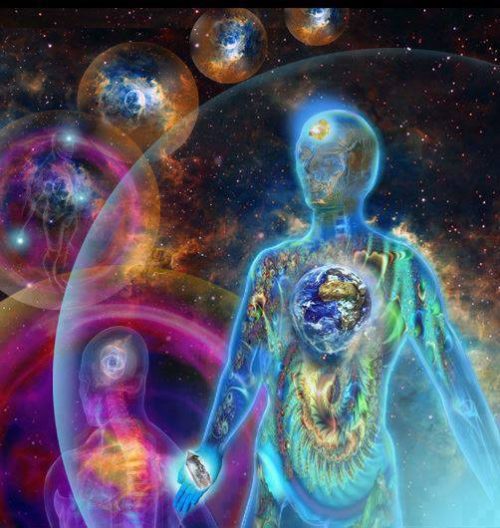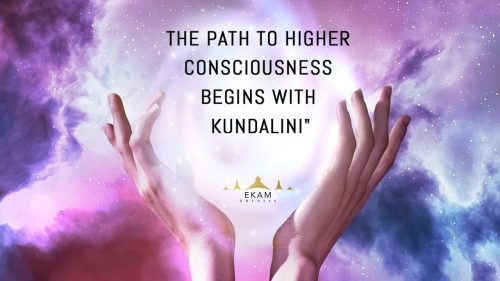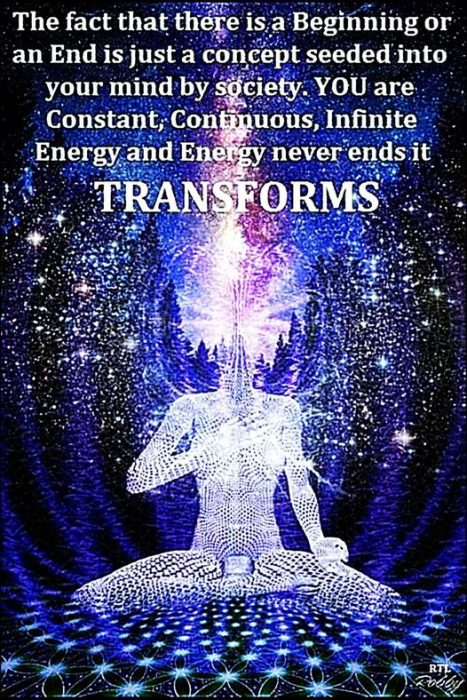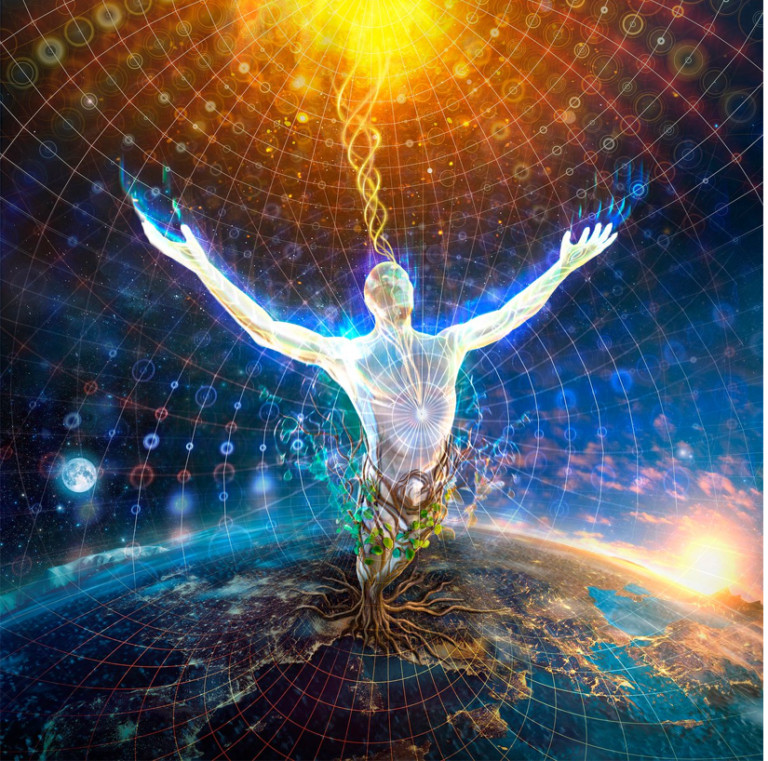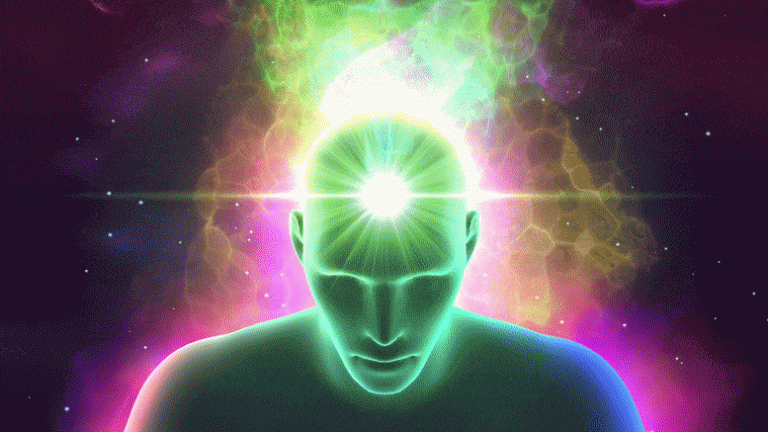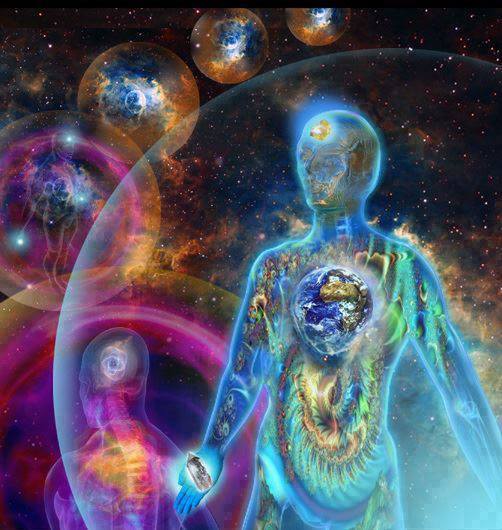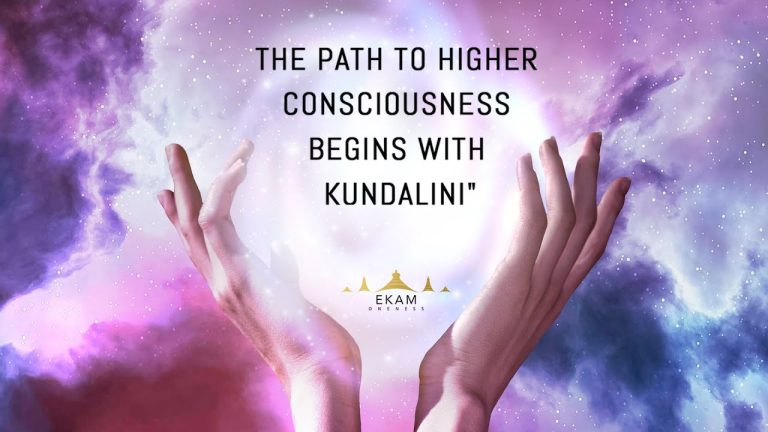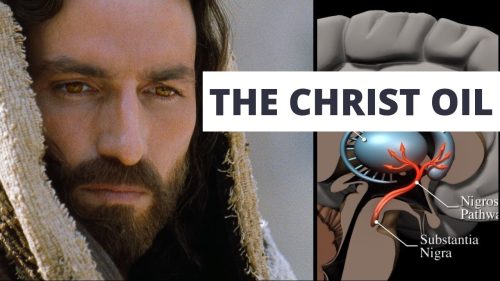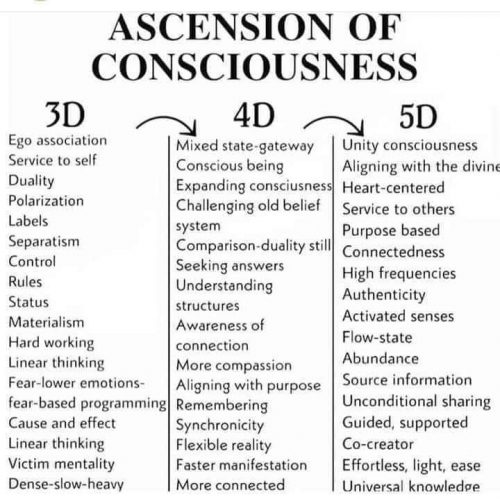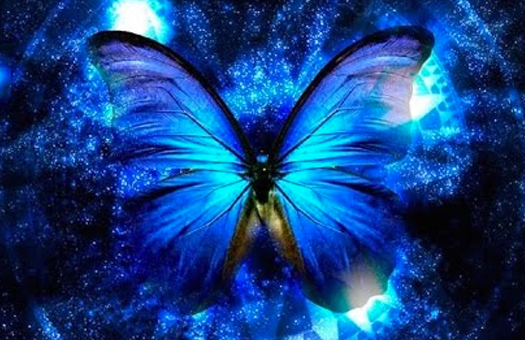
Kundalini: The Energy of the Depths. The arousal of kundalini, in its true sense, does not simply imply the activity of a hitherto sleeping force, but actually the start of a new activity by changing the whole system to adapt it to a new pattern of consciousness through changing the composition of the bioenergy or subtle life force permeating the whole body.
Numerous sources suggest that the key to spiritual unfoldment may lie in the “kundalini experience.” literally translated, “kundalini” means “coiled,” a reference to the ancient yogic symbol of a coiled serpent at the base of the human spine. In yoga, this “serpent power” represents a latent psychophysical energy that can, when awakened, pro-duce a profound psychophysical trans-formation that opens a person to higher states of consciousness and being.
In kinship for his brothers and sisters, Ramanuja found his mind reaching out and embracing all those around him and expanding into the far reaches of space. He felt the colossal whirling of galaxies and heard every atom and every living thing cry in agony from being separated from their Creator. And he was horrified that the Lord’s children fitfully slept under a miasmic blanket of maya in a night of unhallowed darkness.’
The kundalini process, said Gopi Krishna, is the “secret” underlying all the world’s sacred traditions, hermetic philosophies, mystery schools, occult paths, and mystical systems that claim to lead to a higher state. He also argued that it is the key to understanding genius, insanity, creativity, psychic abilities, vast social pressures for world change, and, in general, all the mysteries of life, including the energies responsible for evolution.
Jung went so far as to say: “When you succeed in the awakening of kundalini so that she starts to move out of her mere potentiality, you necessarily start a world which is totally different from our world: it is a world of eternity.”
“Kundalini is the source of ultimate human knowledge and power.”
A full kundalini awakening, says Gopi Krishna, transmutes an ordinary person into a sage, an illumined being whose spiritual gains are “stamped” upon his or her genes and thus passed on to progeny. In his view, this awakening cannot he forced through self-manipulation of the nervous system; rather, it is something that occurs naturally to those God-sur-rendered persons who are genetically “ripe.” Full awakening, however, should he understood to include a post-samadhi stabilization period in which wisdom and insight are grounded in daily living through character refinement and altruism.
Christiana Morgan, whose visions and paintings formed the basis of Jung’s Vision Seminars, painted a vision of a man and woman lying together in a womblike state, enclosed by a circular image of a snake. Here the masculine and feminine are enclosed in a pre-conscious state that resembles the condition of Shiva and Shakti be-fore Shiva has initiated the birth of consciousness. This is the condition of the prima materia at the beginning where all the possibilities and mysteries of life have yet to be discovered. The couple are encircled by the snake that lies at the base of the spine, awaiting entrance into life.
Jung notes that the arrows outside the circle are pointing outward, which shows the direction in which the snake is trying to go. These two pictures give us clear images of the dormant condition of the Kundalini serpent and its resulting attempt to leave its unconscious state and aspire toward wholeness. In order to activate the latent energy in the Kundalini, I believe two things must happen. Initially, Shiva must kindle the fire that starts the whole process going and propels the Kundalini to leap up and begin moving.
Kundalini is aroused particularly by a spark of fire that con-stellates in muladhara, the instinctual realm. It is the fire that brings spirit to matter, the fire of light within the dark recesses of the root chakra. The life force becomes activated through the intake of breath, the spark of life that brings consciousness to instinctual life. The redness becomes a brilliant burning red that sends sparks urging the Kundalini on to the crown chakra, quinta essentia of spirit. Secondly, enough energy must accumulate in this muladhara-lumbar area to awaken the serpent. This happens through a “damming up” of the energy, as is mentioned in The Secret Of The Golden Flower.
When something comes in to stop the natural flow of energy in the body, the energy accumulates until the opposite pole is constellated causing a reversal of the flow of energy toward its source. This is what ultimately happens with the Kundalini such that when enough energy has been stored, the serpent energy begins to rise of its own accord. The question remains: how do we gather this energy together?
The hatha yoga texts prescribed a combination of postures (asanas) as well as specific breathing techniques, all aimed at the immobilization and retention of the breath that would then trigger the rise of the Kundalini. It is not possible to discuss all the methods here but we can say that when we have a conscious relationship with the breath, then something can happen. What we are doing is also bringing the focus of awareness inward, allowing all and everything to be gathered and worked on within the alchemical vessel of our body.
Specifically, the inhalation always remains passive, thus receiving the energy impregnated with prana, the external manifestation of the life force. Each time that we exhale down into the sacral area, part of the breath is stored, accumulating energy to prepare for the next breath. In this way the breath deepens, reaching down to the inner-most cellular level where transformation can take place at the archetypal level. When the direction of the energy flow reverses, opposing sources of energy are constellated.
The goal will be to eventually unite these pairs of opposites, the downward heavier energy and the lighter more upward one. The downward, backward-flowing energy connects us to matter and the upward, lighter energy to spirit. Spirit and matter may once again unite in glorious harmony.
There are many legends concerning human beings that are born from trees. Trees also connect us to death; we will end our life inside a tree if we choose to be buried in a coffin. Trees have a marvellous dual nature. Being feminine, they can give birth but they can also be phallic as is shown in the alchemical portrait of Adam with the tree growing out of his body as a phallus (Figure 24). The tree roots us strongly to earth and connects us to muladhara, to our ability to survive on our own. What plants and trees really have to teach us is autonomy, for they are the only living things that can exist completely by themselves.
When we become a tree, we come into a quiet place of trust, of knowing who we are now and who we may be-come. Silence is the cherished secret of all the yoga poses. When we remain absolutely still we experience the exquisiteness of the breath as transformer of the subtle body as the Kundalini is activated. The wakening of the Kundalini is not simply the arousal of a dormant force within us, as Gopi Krishna explains:
When we become a tree, we surrender to a fundamental law governing the growth of all plants, that they all grow in spiral formations. The spiral pulls us in two directions at once, back into the womb of our past and simultaneously pushing ahead, yearning for reunion with the divine. Each complete breath we take turns in on itself constantly expanding and contracting as we inhale, as we exhale. Everything that expands must contract, and vice versa. The Sanskrit word Kundalini means literally “of a spiral nature,” directly implying a double spiral that moves up and down in constant motion.
Etymologically, the long i added to the Sanskrit adjective kundalin, meaning “circular, spiral, coiling, winding,” makes a feminine noun signifying “snake,” the reference being to the figure of the coiled female serpent, the goddess Kundalini. This double spiral consists of the two nadis, ida and pingala, meaning sun and moon, respectively, which together weave a figure-eight around the central susumna nadi.
The susumna is the Kundalini herself in all her glory, alone as a widow).” like muladhara. We become the spiral as we wind these masculine and feminine energies together with our breath. Kundalini starts in the roots, in the muladhara-sacral region and moves toward the “thousand-petaled lotus” (sahasrara) at the crown of the head. Paradoxically, we are born out of both poles of this central axis, from the womb of the eternal mother and from the seed of the divine father.
The spiral, which has neither beginning nor end, al-ways returns by winding on to its source. From its opposite pole, the source of energy is able to see and reflect on itself from afar, thereby becoming conscious of itself. In this way heaven and earth separated and engendered the light of consciousness. It is our function as human beings to act as a link between heaven and earth, between the di-vine and human worlds. One way we do this is through the practice of yoga, through uniting body with psyche in glorious harmony. The tree pose, among others, brings us in line with the world axis. Figure 25 gives an excellent representation of the journey of the Kundalini. We should note that there are only six chakras pictured here compared to the normal seven, the number we usually think of as completing the chakra system.
The seventh chakra does not, strictly speaking, belong to the system per se; rather it is the place where consciousness comes in on the transcendental level and, therefore, it is often included in the chakra system. The ancient texts stated that if the energy force has flowed freely and opened the blockages on its way, then the energy is free to leave from the crown of the head and unite with the divine. It seems as if this energy almost jumps off the crown of the head in the joy of union with the divine.
There will always be a part of this energy, however, that remains in the body and forces the descent once again, uniting with the chthonic world. It is only at the time of mortal death that all the energy leaves the body and goes through the veil to the other world. We can also find the Kundalini in the image of the two serpents encircling the caduceus of Asclepius, our modern symbol for healing. Hans Holbein painted the popular image of two serpents with a dove sitting between them at the summit. The dove is placed there to balance out the strong power of the chthonic in the two encircling serpents.
This painting is not unlike the alchemical picture discussed earlier, where an eagle is seen chained to a toad. Another typical portrayal of the Kundalini is with wings at the top of the ascent, symbolizing a “winged radiance” assumed to belong only to those who have achieved the delicate balance between the op-posing forces of the two serpents.
These wings are thought to be the lobes of the medulla, the petals of the third-eye chakra, whose vision of the union of body and soul has been realized through the practice.’79 In alchemy the soul evolves through the unfolding of two subtle energies, Sulphur and Quicksilver, conveying the notion of the two breaths of ida and pingala in the subtle body. Together they are termed Nature, hence it was repeatedly said:
“Nature takes delight in Nature; Nature contains Nature; and Nature can over-come Nature.”
These energies were thought to be the two serpents that encircled themselves around the caduceus, calling forth Mercurius, the healing power through which transformation took place. As the Kundalini makes her double-spiraled ascent, she pierces each of the six chakras on her way, thus opening the energy along the spine. Each chakra is a center of energy that like all mandalas is a world unto itself. William Hauer defined the chakras as “symbols of the experience of life, they show the real inner meaning of such an experience, to help you to understand and to interpret spiritually what you have lived.
Light circles unremittingly in the eternal search for the center in each chakra. It is this process of circumambulation that brings us back to the original prima materia, the creative source within. Jung says: The potter’s wheel rotates on the ground and produces earthenware (“earthly”) vessels which may figuratively be called “human bodies.” Being round, the wheel refers to the self and the creative activity in which it is manifest. The potter’s wheel also symbolizes the recurrent theme of circulation.
As if by a miracle, through the constellation of the prima materia, once the inner light has been discovered the entire chakra begins to rotate by itself. In The Secret of the Golden Flower it is said that the most important thing for achieving the circulation of the light is rhythmical breathing.
Positive light brings the embodiment of consciousness. As the focus of awareness becomes more and more concentrated, the center of each chakra becomes more distinct and more conscious, enabling us to relate to it in a clearer way. Each chakra has within itself the capability to develop a new part of the personality within an enclosed vessel, corresponding to its position on the spine. As the energy rises, consciousness intensifies. Jung says that real consciousness only begins in anahata, the heart chakra, which would mean that the lower chakras are unconscious.
It is actually a reversal of attitude that is needed. In the Hatha Yoga Pradipika,188 we learn that the benefits of the inverted poses have to do especially with reversing the flow of a specific fluid away from the brain center. Semen is transformed into ambrosia, the divine nectar of immortality, when the natural upright position of the body becomes reversed. The roots are then in the divine realm, allowing the fluids to flow back toward the head without strain (Figure 29), effecting total yogic integration, a reversal of time that evokes the immortal presence within us. Semen transforms into the nectar of immortality as it rises along the susumna nadi. The main force behind the transformation of mundane semen (as it is called in Tantric alchemy) into the divine nectar of immortality and of the mundane mind to a state beyond mind is a pneumatic one. It is wind that provides the dynamic element which, in the form of disciplined breathing, plays the crucial transformative role in the system of hatha yoga.
